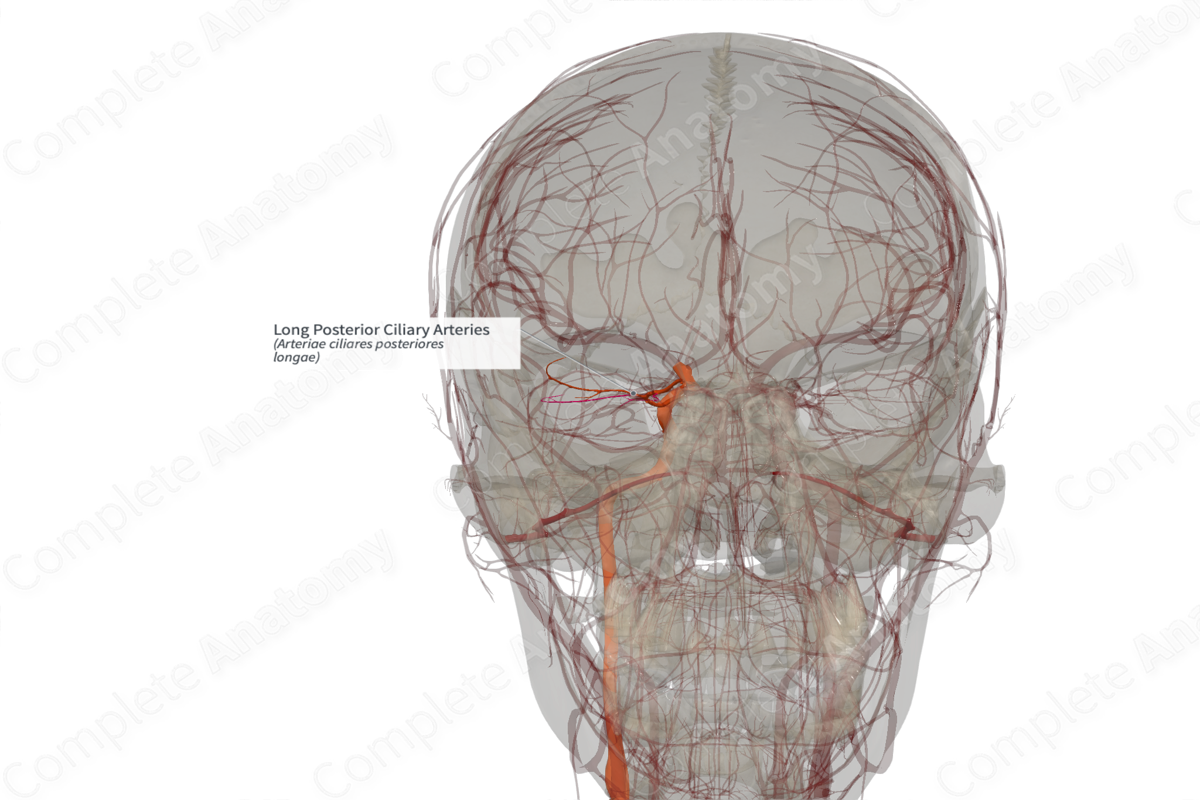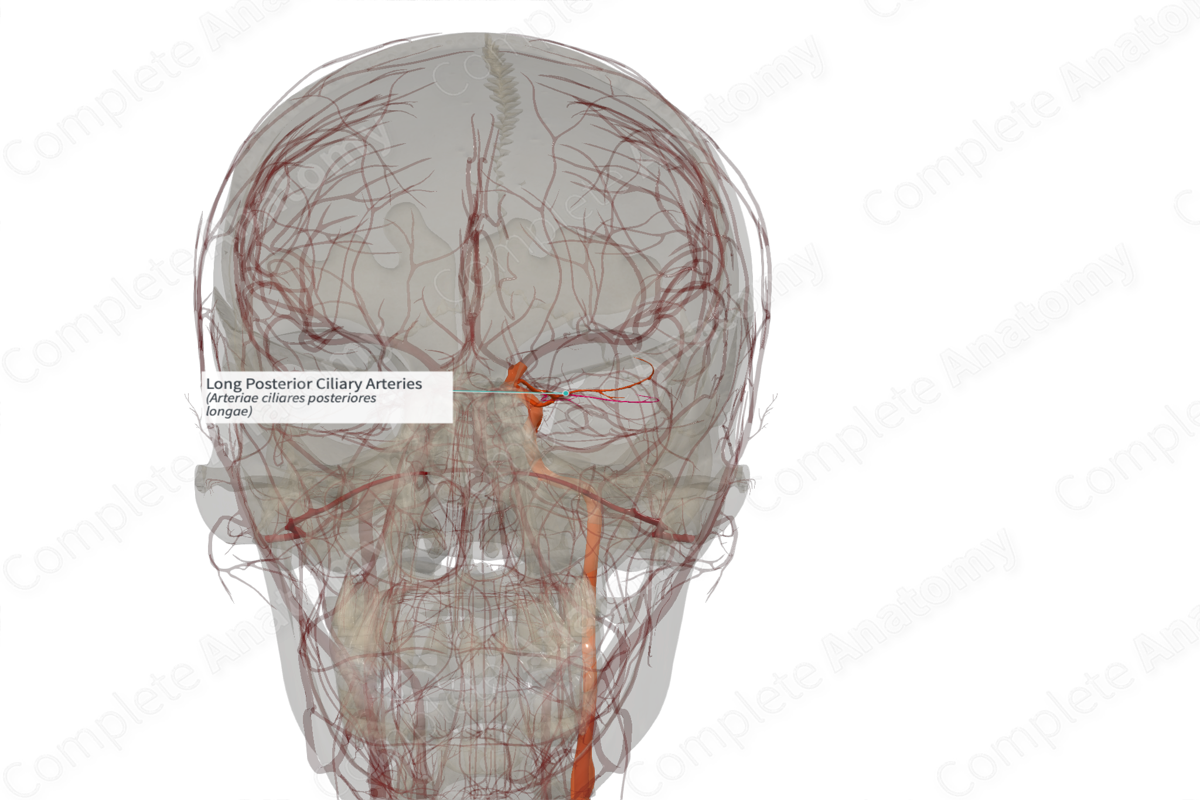
Long Posterior Ciliary Arteries (Right)
Arteriae ciliares posteriores longae
Read moreQuick Facts
Origin: Ophthalmic artery.
Course: Pierce the sclera near the optic nerve.
Branches: None.
Supplied Structures: Iris, ciliary body, and choroid.
Related parts of the anatomy
Origin
The long posterior ciliary arteries arise from the ophthalmic artery. There are usually two arteries.
Course
The long posterior ciliary arteries extend anteriorly and pierce the sclera of the eyeball near the optic nerve. They travel anteriorly in the suprachoroid layer of the choroid, in the medial and lateral horizontal planes of the eyeball.
Branches
There are no named branches; however, the long posterior ciliary arteries divide in the ciliary body and form an anastomosis with the anterior ciliary arteries. This forms the major arterial circle of the iris (Forrester et al., 2008).
Supplied Structures
The long posterior ciliary arteries supply the choroid, ciliary body and iris of the eyeball.
References
Forrester, J. V., Dick, A. D., McMenamin, P. G. & Roberts, F. (2008) The Eye: Basic Sciences in Practice. Saunders.
Learn more about this topic from other Elsevier products


